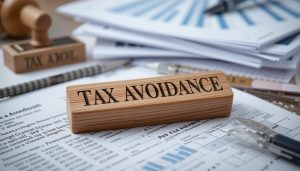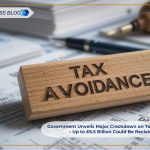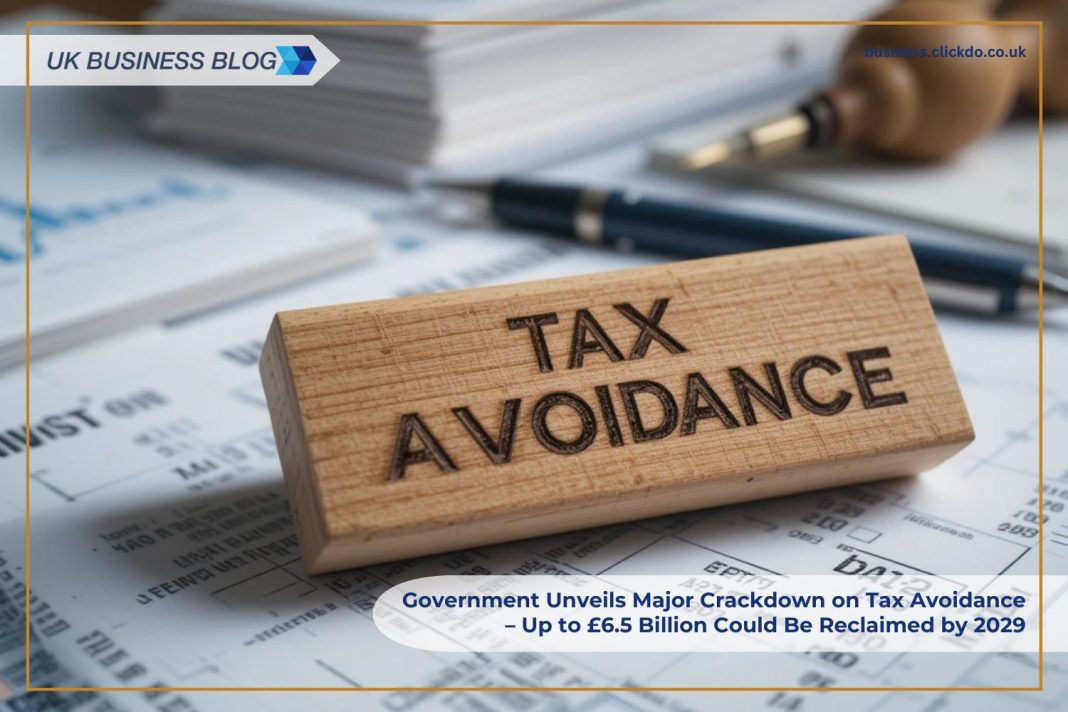Table of Contents
- New tax avoidance measures could raise to £6.5 billion for the UK government by 2029, which could be used on struggling public services.
- In 2022-2023, the UK’s tax gap stood at £39.8 billion, with an estimated £5.5 billion attributed to tax avoidance and evasion
- As part of the new crackdown, HMRC will recruit 5,000 additional compliance officers to help detect and prosecute tax avoidance cases, as well as 1,800 new debt collectors.
- HMRC will issue ‘universal stop notices’ with harsher penalties, which will potentially result in criminal prosecutions for those continuing to promote avoidance schemes.
New measures announced by the UK government aim to close tax loopholes, strengthen HMRC’s enforcement powers, and impose tougher penalties on those promoting or using tax avoidance schemes. The reforms are expected to raise as much as £6.5 billion by 2029 revenue which could be reinvested in vital public services without increasing the tax burden on honest taxpayers.
Ridgefield Consulting, an independent accountancy firm based in Oxfordshire, explains how these new changes are expected to impact business compliance and reporting obligations, particularly for directors using complex financial structures.
Chancellor Rachel Reeves said:
“When working people are paying their taxes while still struggling with the cost of living, it cannot be right that others are still evading what they rightly owe in tax.”
What Is Tax Avoidance?
 There is a clear distinction between tax evasion and tax avoidance:
There is a clear distinction between tax evasion and tax avoidance:
- Tax evasion is illegal – it involves misrepresenting income or assets to reduce a tax bill.
- Tax avoidance, while not illegal, involves exploiting technicalities or loopholes to minimise tax and is widely considered contrary to the intended spirit of tax legislation.
The latest crackdown reflects a shift in approach, with avoidance schemes facing greater legal and financial risks than ever before.
The Scale of the issue:
According to HMRC, the UK’s tax gap stood at £39.8 billion in the 2023-2023 fiscal year, with £5.5 billion attributed to tax avoidance and evasion combined. These new government measures aim to significantly reduce this gap by targeting the promoters of tax avoidance schemes and tightening legislation.
- Closing Loopholes and Enhancing Scrutiny
The government announced that it plans to tighten commonly exploited loopholes in grey areas by refining legislation and wording to make them less ambiguous and harder to exploit for tax avoidance. They will also increase scrutiny on businesses that are seen to be using manipulative or complex structures around these loopholes in their tax filings and acting ‘not in the spirit of the law’ by manipulating the loopholes’ wording to minimise their tax bill.
- Using AI technologies and enhanced enforcement
In a bid to crack down on tax avoiders and enforce compliance, HMRC is set to recruit 5,000 additional HMRC compliance officers and 1,800 debt collectors to set up investigations and collections. These teams will use AI technologies and data analytics to flag suspicious behaviour and support faster enforcement actions.
- New legal powers: stricter penalties and universal stop notices
HMRC will start issuing ‘universal stop notices’ targeting individuals behind tax avoidance schemes. This will allow HMRC to take tougher action against promoters of these schemes, including criminal procedures for those who continue to offer them after a “stop” notice has been served. They will also issue these to individuals as well as companies to stop ‘phoenixing’, ie, the setting up of new companies under new names in a bid to get around the notice. The government also plans to introduce ‘promoter action notices’ targeting banks, employment agencies and advertisers in promoting these schemes.
What does this mean for Business owners?
 These changes will not only affect large corporations or those involved in complex tax planning, but also common business practices. Business owners should be aware of the following key implications:
These changes will not only affect large corporations or those involved in complex tax planning, but also common business practices. Business owners should be aware of the following key implications:
- Greater scrutiny on tax returns: HMRC are expected to become more vigilant and increase investigations, questioning deductions, reliefs and structures, especially if tax-savings strategies appear overly technical or artificial.
- Liability for directors: Company directors could be personally accountable for involvement in tax avoidance schemes, particularly if they are found to have facilitated or endorsed such arrangements.
- Reputational risks: if found to be involved in or using a tax avoidance scheme, it can damage a company’s reputation with customers, investors or regulators.
- Compliance obligations: Businesses will need to ensure that their tax practices align with both the letter and the spirit of the law. This may mean reviews of existing strategies and structures.
Why It Matters for Business
As HMRC continues to close the gap of tax avoidance and tighten its approach, businesses must ensure they can demonstrate fair and transparent practices. This is particularly important when filing company tax returns, as HMRC is expected to apply closer inspection, and detailed and accurate reporting will be key to avoiding investigation or penalty. Remaining compliant both legally and in line with HMRC’s shifting interpretation of fair tax behaviour is now more critical than ever.
Author Profile
- Passionate content creator, contributor, freelance writer and content marketing allrounder.
Latest entries
 FeaturedJuly 31, 2025How Directors Can Earn £1,000 Tax-Free From Their Own Company
FeaturedJuly 31, 2025How Directors Can Earn £1,000 Tax-Free From Their Own Company FeaturedMay 28, 2025Government Unveils Major Crackdown on Tax Avoidance – Up to £6.5 Billion Could Be Reclaimed by 2029
FeaturedMay 28, 2025Government Unveils Major Crackdown on Tax Avoidance – Up to £6.5 Billion Could Be Reclaimed by 2029 FeaturedMay 9, 2025Oxford Landlords Face Tax Hit as Furnished Holiday Let Benefits End in April 2025
FeaturedMay 9, 2025Oxford Landlords Face Tax Hit as Furnished Holiday Let Benefits End in April 2025 FeaturedApril 28, 2025Rising Tax Pressures Push Directors to Rethink Income Strategies for the New Tax Year
FeaturedApril 28, 2025Rising Tax Pressures Push Directors to Rethink Income Strategies for the New Tax Year





